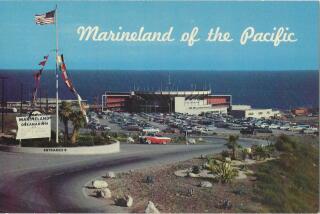John E. Heyning, 50; marine biologist known in Southland as ‘Whale Man’
- Share via
John E. Heyning, a marine biologist with the Natural History Museum of Los Angeles County who dramatically furthered research on marine mammals, especially the study of beaked whales, has died. He was 50.
Heyning died Feb. 17 at Little Company of Mary Hospital in Torrance after battling amyotrophic lateral sclerosis, also known as Lou Gehrig’s disease, for more than three years, the museum announced.
For the record:
12:00 a.m. March 1, 2007 For The Record
Los Angeles Times Thursday March 01, 2007 Home Edition Main News Part A Page 2 National Desk 0 inches; 30 words Type of Material: Correction
Heyning obituary: The obituary of marine biologist John E. Heyning in Saturday’s California section said that he and his wife, Corinne, lived in Torrance. The couple lived in Hermosa Beach.
To colleagues, Heyning was curator of marine mammals and deputy director of the museum. He was the easygoing scientist who helped build the museum’s collection of marine mammal specimens -- it has more than 4,000 -- into the second-largest in the world. Only the Smithsonian Institution in Washington has more.
Many Southern Californians knew him as the “Whale Man,” a nickname earned from decades of carting away stranded whales and other cetaceans from area beaches. Using a truck custom-fitted with a whale-sized winch, Heyning could collect as many as 30 marine mammals a year.
The unusual cargo often drew the attention of freeway drivers who would yell, “Is it real?”
“Los Angeles is probably the only place in the world where people would see a dead whale on a truck and think it might be fake,” Heyning told the Orange County Register in 1988.
At a museum laboratory in Vernon known as the “whale warehouse,” Heyning conducted revealing autopsies on the aquatic mammals.
“His research went across a very broad spectrum, although he was known for his work on beaked whales and their evolution,” said Jim Dines, mammalogy collections manager at the Natural History Museum.
Heyning also became known for his studies of the anatomy of big whales, said James G. Mead, curator of marine mammals for the Smithsonian Institution.
Since the 1980s, Heyning had researched beaked whales, which account for about a quarter of all whale species. Little is known about them because the open-ocean animals are seldom seen, Mead said.
Working with Mead, Heyning showed how the beaked whale uses its tongue and specialized anatomy to suck its prey, usually squid, “out of the water like a giant vacuum cleaner,” Discover magazine reported in 1995.
With the help of a live whale named J.J. found off the coast of Marina del Rey, Heyning and Mead also determined that gray whales use their tongues to regulate body heat. Before their 1997 study, blubber was considered the main way whales trap heat.
Heyning also was able to show that the common dolphin, long believed to be one species, was actually two, Dines said. By studying bodies and skeletons of the two species -- the long-beaked and short-beaked dolphin -- he found subtle physical differences. In 1994, Heyning and colleagues documented their finds using DNA.
John Edward Henning was born in San Jose and raised in Torrance. His librarian mother and electrical-engineer father divorced when he was 6.
He received a bachelor’s degree in zoology in 1980 from Cal State Long Beach. At UCLA, he earned a master’s degree in biology in 1985 and a doctorate in biology a year later.
The avid surfer and scuba diver met his wife, Corinne, at Cabrillo Marine Aquarium’s whale watch program. They married in 1993 and lived in Torrance.
Heyning, who taught at UCLA and USC, joined the Natural History Museum as a volunteer in the late 1970s and stayed for the rest of his career.
“As important as he became as a scientist, he never stopped being the boy who came home for dinner with a frog in one pocket and a crawfish in the other,” Paul G. Haaga Jr., president of the museum’s board, said in a statement. “His love of all marine life was both infectious and inspiring.”
After Heyning became the museum’s deputy director in 1999, the staff gave a nod to his wardrobe by turning Fridays into Hawaiian-shirt day.
In addition to his wife, Heyning is survived by his children, Marlene, 11, and Nicolaas, 9; his parents, Johanna Alving of Torrance and John M. Heyning of Houston; two brothers; and a sister.
A celebration of Heyning’s life will be held at 3 p.m. today in the North American Mammals Hall at the Natural History Museum of Los Angeles County, 900 Exposition Blvd., Los Angeles.
Instead of flowers, the family requests that donations be made to the John E. Heyning Research Expedition Fund, National History Museum of Los Angeles County, 900 Exposition Blvd., Los Angeles, CA 90007; or the ALS Assn., www.alsa.org.
More to Read
Sign up for Essential California
The most important California stories and recommendations in your inbox every morning.
You may occasionally receive promotional content from the Los Angeles Times.











